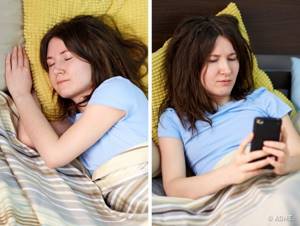Some scientists believe that a glass of red wine in the evening has a beneficial effect on brain function and removes toxins. The editor of AdMe.ru set up an experiment: she drank a glass of wine every day for a whole month. That's what came out of it.
I'm 28 years old and I wouldn't call myself a fan of alcohol. I take it quite calmly, but about once a week (usually Friday or Saturday) my friends and I go to have a blast at a bar or have a party at home. Sometimes I meet someone during the week for a glass of beer.
Photo: Bright Side
As an experiment, I decided that for a month I would drink a glass of wine every evening at home with dinner. For this, I chose a good red dry Chilean wine - it is dry red wine, according to some researchers and doctors, that has a beneficial effect on the body.
Sleep problems

Photo: Bright Side
I don't suffer from insomnia and usually fall asleep without any problems around 11:00 pm. But literally on the 2-3rd day of the experiment, I began to have problems sleeping: I unexpectedly woke up in the middle of the night and could not sleep. After being stuck on my phone for 10-15 minutes, I finally fell asleep. True, towards the end of the experiment, sleep returned to normal and such problems no longer arose. Maybe it was some kind of adaptation of the body?
How your health will suffer if you drink wine every day
There are many theories about the origin of wine. Behind each of them are countries that want to secure the status of the “progenitor” of the drink. Egypt, Greece, Rome are the top three contenders. Moreover, each country has a number of arguments and documents proving their involvement. In Greece, there is even a legend that says that the “culprit” for the appearance of wine is the shepherd Estafilos, who lost his sheep. While searching for the loss, he discovered leaves that would later be used to create a refreshing drink, still unknown to anyone.
As you understand, there is still no answer to the question “who created wine and when.” But there is a lot of other information. For example, about how winemakers approach their craft or what will happen to a person if he drinks wine on a regular basis. Each of these topics is relevant, but let’s not get ahead of ourselves and go through each of them.
PRODUCTION PROCESS
Winemaking is a multi-stage process, which means it requires a lot of time and patience. The production is based on grapes or other berries suitable for wine. I will make a reservation that nowadays it is very difficult to “snatch” really high-quality wine. Powdered drinks are especially popular, as they save not only time, but also resources spent. I propose to start by considering the classical model of wine making.
Winemaking involves several stages:
1. Extraction of raw materials
Berry picking is the initial and one of the important stages of production. The quality of the future wine depends on the quality of the extracted raw materials. To achieve the best results, ripe berries are used, the ripening time of which depends on the area in which they are grown.
It is worth noting that the extraction of ripe resources has been simplified by technological progress. With the advent of new technology, there is no need to use manual berry picking. However, for certain wine varieties, ignoring new technologies remains relevant. As a rule, this applies to expensive wines.
2. Raw material processing
This stage contains primary and secondary stages. Washing of raw materials, steam treatment and de-combing are the procedures of the primary stage. Interesting fact: steaming is only used to make white wine. This is done to protect against oxidation and eliminate harmful elements.
Secondary processing includes crushing berries to obtain pulp (a mass that includes pulp, juice, and seeds). Once upon a time, before the advent of new technologies, it was obtained by crushing grapes with bare hands or feet. In the case of making red wine, the pulp is heated. This is done so that the berry juice stands out more quickly.
3. Fermentation
Fermentation is an important stage in winemaking. It is carried out by working with yeast, the result of which is the formation of alcohol. Fermentation has its own stages: active and passive. Active fermentation is based on the sale of most of the product. This process takes about five days; the main reaction occurs in open vessels. Passive fermentation requires more time. This stage can last for weeks (depending on the amount of sugar). Unlike active fermentation, in passive fermentation access to oxygen is blocked.
4. Conservation
Thanks to this stage, the shelf life of drinks is extended. There are several most relevant technologies for this process:
- Pasteurization - heating and then cooling the future drink; is done to get rid of harmful microorganisms;
- Sterilization is a process similar to pasteurization. The key difference is the heating temperature. If in pasteurization it is from sixty to ninety degrees, then in the case of sterilization it is up to one hundred and twenty;
- Aseptic canning - as in the two previous cases, heating the future drink. Here is the key feature in bottling liquids;
- The introduction of preservatives is the simplest and most common method of preservation. The preservatives used are of natural and artificial origin. Natural ones include sugar and ethyl alcohol, artificial ones include acetic and sulfurous acids.
5. Excerpt
The very last, but no less important stage. It is applied to some types of wines by sending the finished drinks to dark places. This is done to increase the richness of taste.
In addition to the classical approach to wine making, there are less “natural” methods. Yes, you understood correctly - we are talking about powdered drinks. You must be thinking that this is all a myth; that powder wines do not exist. I will hasten to convince you otherwise.
Powdered wines are a kind of “tailoring” to existing analogues. In an attempt to recreate wine products, experts discovered a copying formula, which is based on powder, water, alcohol and various additives to stabilize taste and aroma properties.
The advantage of such drinks is obvious - saving money and time. But, unfortunately, this is where the advantages end, because the quality of the drink leaves much to be desired. Moreover, powder products can cause serious harm to health.
To distinguish natural wine from powdered wine, it is recommended to pay attention to the bottle, label and taste characteristics. For example, natural wine is sold only in glass, and the label of such products must contain a note indicating the naturalness of the product.
It is worth noting that in 2020, a law was introduced in the Russian Federation banning the sale and production of powder surrogates. How effective the law is is a question, so be careful when choosing wine products.
Harm to health from frequent drinking of wine
Finally, we come to the most interesting part: revealing the harmful properties of wine products. There are various myths about wine: about the drink’s 100% health benefits and about its categorical harm. Some say that wine can correct problems with blood vessels and, with the right dosage, improve overall health. Others, on the contrary, exaggerate the harm of the drink. So where is the truth? I think it's in the middle.
The harm of wine and other alcoholic products is obvious when it comes to excessive abuse. Alcohol in large quantities will quickly kill your liver, and then the entire body. To prevent this from happening, experts advise drinking wine in doses. If you are a woman, one glass will be enough for you; if you are a man, two glasses will be enough. You are probably wondering why the norm for the male half is higher. This is explained by women's intolerance to alcohol. Since men are stronger in this matter and are allowed more.
Do not forget that wine contains sugar and sulfites, which are harmful to the body. I’ll make a reservation that in small quantities they do not pose a danger, but if you overdo it, it’s a different matter. American experts say that the amount of sulfites in the body should not exceed four hundred milligrams. Going beyond the established limits can cost you health complications. Possible symptoms include vomiting, nausea, and cough. And that's not all.
But these are all general words that lack specifics. I suggest taking a closer look at the side effects.
1. Sleep problems.
If you frequently turn to wine, you can expect hopeless insomnia. The fact is that alcoholic drinks have an invigorating effect, which means they prevent you from falling asleep, depriving you of proper rest. The consequence of excessive wine can be a disruption of the REM sleep phase, during which your body relaxes most.
2. Dehydration.
Dehydration can also be a consequence of drinking wine. Absorbed alcohol has a “drying” effect on the body. The more you consume, the more intensely water is removed from your body. The result of constant dryness can be a deterioration in the condition of the skin: tightness appears and pimples appear.
3. Loss of appetite control.
This phenomenon manifests itself in different ways. In some cases, people lean towards sweets, in others they refuse food altogether. There is an explanation for all this. For example, increased appetite is caused by the body's attempt to protect itself from incoming toxins. The larger the snack, the more toxic effects are reduced. That is why, especially when drinking alcohol for the first time, your appetite works in earnest.
To summarize, I would like to note that wine is a drink that is harmful to the nervous system. At first it seems deceptively harmless and even instills calm, but this is only at first. Many people think that drinking wine every day is beneficial, justifying their weakness. But we should not forget that alcohol a priori cannot have only positive effects. The more often you use it, the faster the consequences will make themselves felt. This also applies to seemingly moderate dosages. Therefore, think twice before picking up a bottle or the same glass.
The author of the article is Sasha Usanova.
Concentration decreased
I tried to notice any changes that occurred in my health and well-being. Every day I changed my blood pressure and I can responsibly declare: alcohol did not affect my readings in any way and my blood pressure remained normal. I also didn’t notice any shortness of breath or any other problems.
But something became obvious after the end of the experiment. It’s strange, but as soon as I stopped drinking wine in the evenings, I periodically began to experience drowsiness and strange weakness: it was difficult to concentrate while working. I don’t know what this could be connected with, I only hope that these not very pleasant symptoms will disappear soon.
Skin problems
Perhaps due to the fact that I began to leave the house less often and eat more hearty dinners, I gained several kilograms of weight. Unfortunately, daily alcohol consumption, even in such a short period of time, still affects one’s appearance: due to sleep disturbances, bruises appeared under the eyes, and inflammation appeared on the face.
The girl decided to end the experiment three weeks after it began. Here are her conclusions:
- drinking a glass of wine at home is cheaper,
- you don't wait for Friday as a reason,
- even small doses will cause health problems.
Is a glass of wine every day harmful?
There is still controversy surrounding the consumption of small amounts of alcoholic beverages. As a result, many people think that “just one glass of wine a day” is all good and no harm. But is this really so, answers the Office of Rospotrebnadzor for the Irkutsk Region.
The main argument of supporters of the benefits of alcoholic beverages over the past three decades has been, and remains, the so-called French paradox: the relatively low level of cardiovascular and cancer diseases among residents of France. However, not all so simple. France is not the only country where dry red wine is produced and consumed. However, for some reason, the positive effect of alcoholic beverages was not found in this country’s closest regional neighbors - Spain, Portugal or Italy. And over time, it turned out that while the level of heart disease is relatively low, the French are no less likely than other Europeans to suffer from obesity and liver disease.
One glass of red wine with a volume of about 150 ml contains a little more than one unit - 12 ml of pure alcohol. A unit is a unit adopted in Europe equal to 10 milliliters of ethanol. The dose considered relatively safe for women is two units, for men - three. That is, just a couple of glasses of wine for women is already more than the maximum permissible daily limit of alcohol. For some organs, such as the pancreas, there is no safe amount of alcohol, and they suffer from any dose of ethanol.
Ethanol contained in all alcoholic beverages immediately begins to have a negative effect. After the first glass, the likelihood of developing a stroke increases by 2.3 times and decreases by 30% only after a day.
Attempts to “raise hemoglobin” and “improve appetite” with a glass of wine during pregnancy are especially dangerous. The alcohol contained in any alcoholic drink freely penetrates into the baby’s blood through the placenta. The body of the unborn child is not able to cope with toxic substances that disrupt its development.
The benefits of antioxidants contained in red wine are exaggerated because... polyphenols - contained in wine, can be obtained from other, harmless sources. For example, grapes, their juice or green tea.
On the eve of the New Year holidays, Rospotrebnadzor reminds that the use of high doses of ethyl alcohol (alcohol abuse) is the main among the specified causes of poisoning in the Irkutsk region.
In the general structure of poisoning with alcohol-containing products, alcohol consumption in high (lethal) doses is the main cause of death in the Irkutsk region. Over 9 months of 2017 in the Irkutsk region, 511 people were poisoned, 109 people died due to excessive alcohol consumption.
The Office of Rospotrebnadzor for the Irkutsk Region also reminds that drinking surrogate products and questionable alcohol-containing liquids and preparations without indications for their use is deadly.










